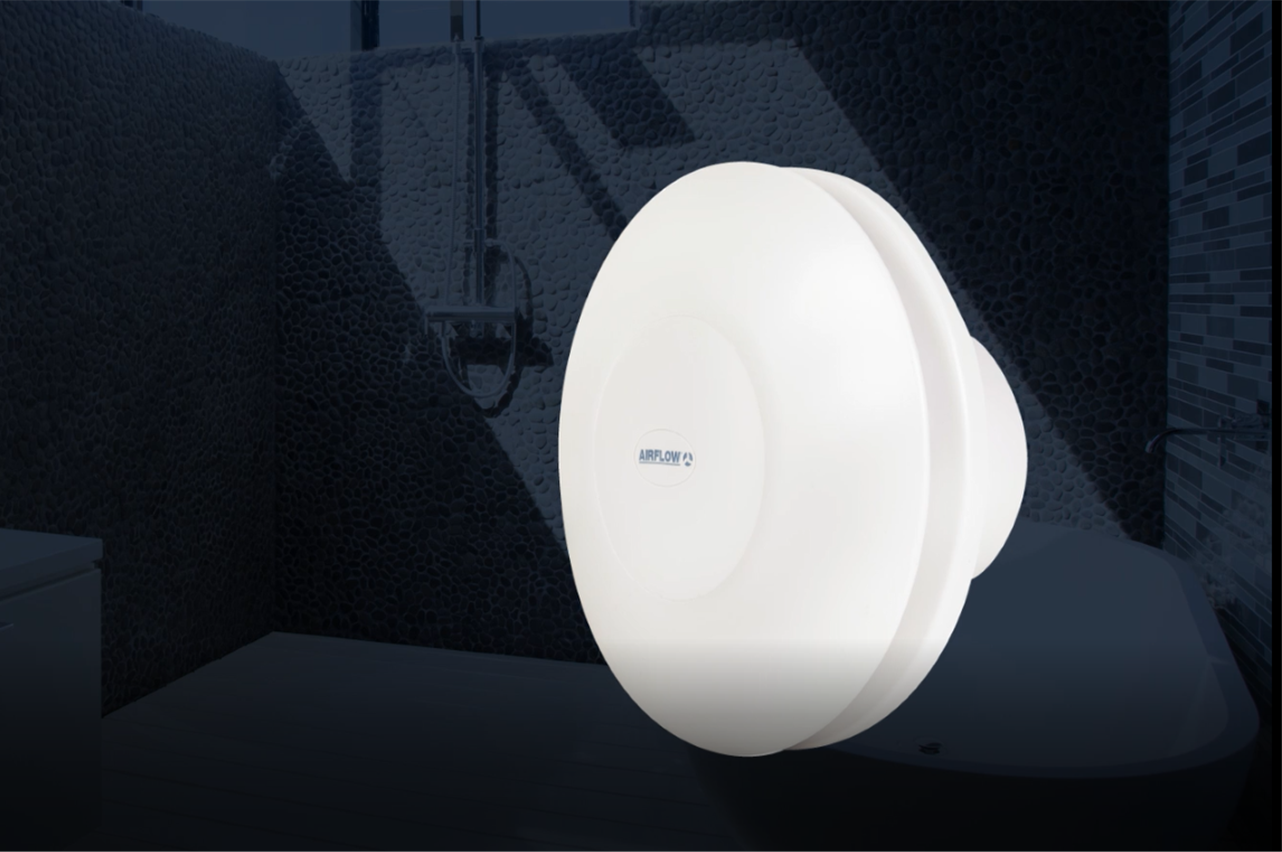By Kiran Sagoo on Wed 28 September 2022 in Blog
What is d-MEV ventilation?

Ventilation has become paramount and many of us are delving into the different ventilation systems available. Decentralised Mechanical Extract Ventilation (d-MEV) is one of the solutions you can use for ventilation in wet rooms (ensuites, bathrooms, utility rooms, and kitchens).
What is a d-MEV system?
D-MEV is a continuous mechanical extract ventilation solution that’s installed in each wet room on a wall or ceiling – the ducting connected to the fan runs directly to the outside and does not connect to a central unit like centralised MEV.
Benefits of a d-MEV system?
There are many benefits to using a d-MEV system, an important one being that it will tackle damp, mould issues and unwanted odours. And it also helps reduce toxins in the air like volatile organic compounds, that can make you ill – just like any other ventilation system.
Some d-MEV products are low energy, quiet, and cost less than a light bulb to run throughout the year.
The extractor fans generally have more technology in them and have efficient motors. They can be mounted on either a wall or ceiling and are easily cleanable by the occupants of the building.
In addition, many builders favour d-MEV as they would rather not install duct runs and find a location for the central unit. And of course, for repair maintenance and improvements in properties, it’s easier to use d-MEV as they just have to plan and locate the units in each wet room. Note that a competent person must install the product.
What is the difference between c-MEV and d-MEV?
Central MEV and de-centralised MEV are similar extract ventilation solutions, however, MEV is a centralised unit that is usually placed in a loft. Whereas d-MEV is made up of single unit extractor fans that each have their own ducting running through a wall or ceiling in a wet room.
You can read about centralised Mechanical Extract Ventilation here.
What is the difference between d-MEV and PIV?
D-MEV and PIV (Positive Input Ventilation) are two very different ventilation systems and usually d-MEV is favoured over PIV.
This is because a PIV system has only one unit (usually located in a loft). It works by pumping and circulating air from the outside into the house and pushing stale air out of gaps and cracks in the fabric of the building.
Additionally, as PIV comes from a loft, in winter it blows in cold air and in summer it blows in warm air.
Moreover, if you have PIV and were to open windows to increase ventilation, the correct ventilation wouldn’t take place. And, unlike PIV, d-MEV does not create drafts when they’re being operated.
Due to houses becoming more airtight, d-MEV would be a more beneficial solution as it extracts the air mechanically to the outside rather than relying on pushing out stale air through the interior’s cracks and gaps.
Overall d-MEV is a solution that conforms to government regulations and is easier to install than centralised MEV.
At Airflow we have a range of d-MEV products, you can view them here.
If you’re planning to upgrade your current d-MEV system or implement one in a building project, use our SELECTair software which will show you an accurate solution that fits your needs. Alternatively, contact us and book a visit at our Air Academy or we’ll direct you to our preferred partner who can assist you.


